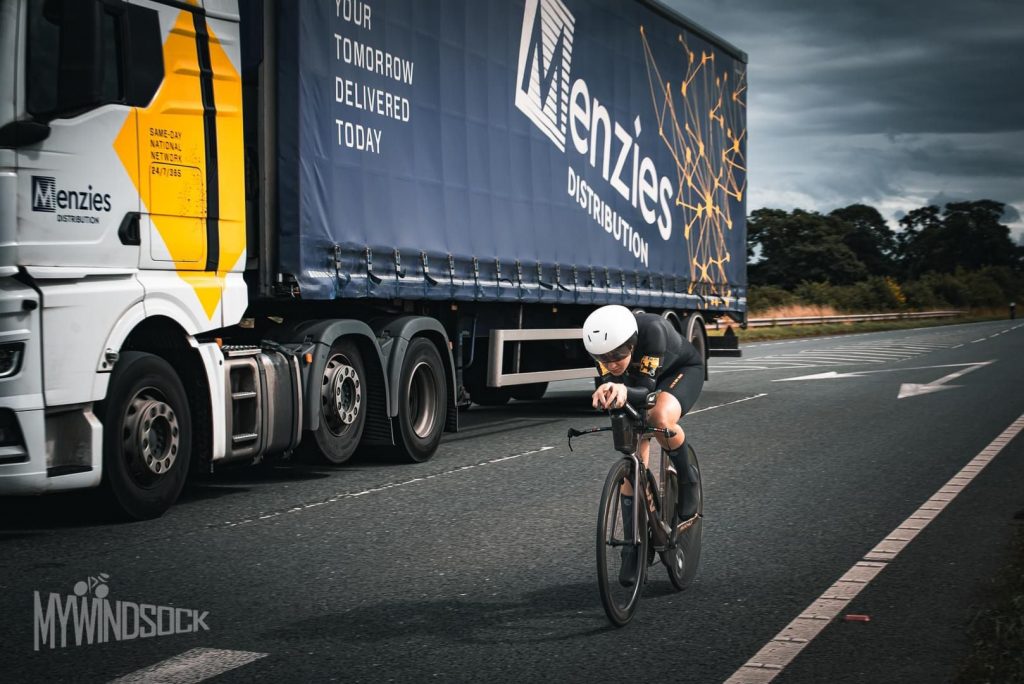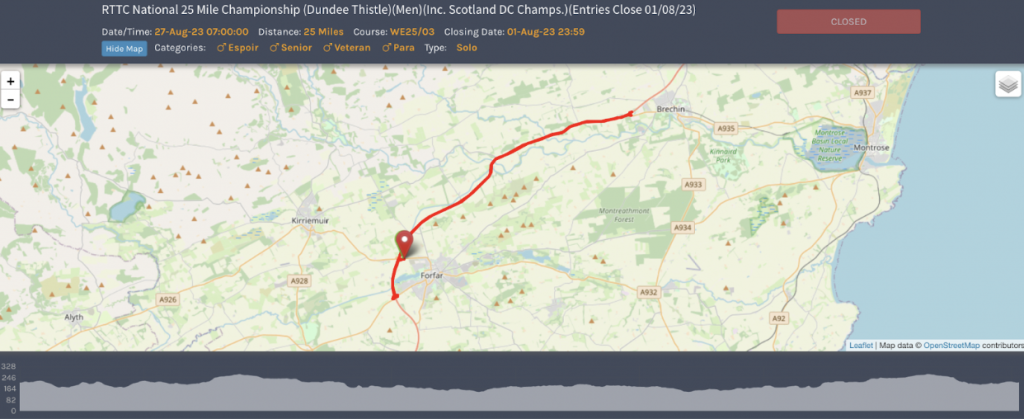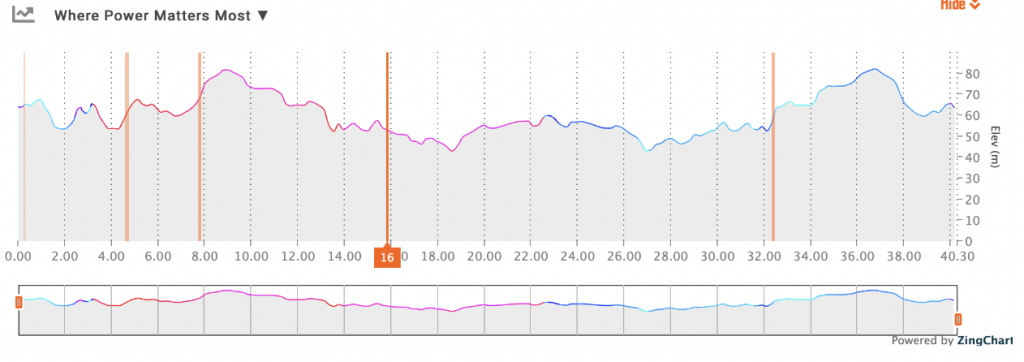
The national 25 is almost upon us. The best time trialists in Britain will gather in Scotland to unleash their watts onto the WE25/03. With CTT providing such a helpful course description, we thought this preview might be an opportunity to check out the advantages that can be gained from using myWindsock to check out the course relative to your rivals who only check CTT.
The good people at Cycling Time Trials put together a course description, elevation map and GPX file for the good majority of open events hosted there. It looks something like this…
CTT Course Description
Start on the A926 west of Forfar Academy, proceed west to join A90 southbound to leave the A90 at the Forfar south exit signed A94, take the 1st exit at the roundabout to go under the A90, take the 1st exit at the next roundabout to rejoin the A90 northbound to leave at the Brechin south exit signed A935 to take the 2nd exit at the roundabout to rejoin the A90 southbound to proceed to the second Forfar exit signed Forfar and Kirriemuir A926 to take the 2nd exit at the roundabout to finish on the A926 heading towards Forfar shortly after.

It’s comprehensive, for sure. I can even imagine the readers and riders thinking, who on earth would I need myWindsock? I have all of this information for free on CTT?
Let’s check the course out with myWindsock and see what insights we can gain…

For the purpose of today, we will avoid weather related chat. For up to day information on conditions from the best provider of cycling weather information you can either follow us on Instagram, where our story will be updated regularly in the 48 hours leading into the event or check the forecast out here yourself. For all insight and analysis available, sign up to myWindsock here.
WE25/03 Course Details
The most interesting feature on this course is the 219m of elevation gain, not hilly by any stretch but considerably rolling for what is essentially an out and back along the A90. This will require riders to pace the effort more efficiently if they’re looking to win. This is not a course that can simply be settled as a watts per cda contest. It’s plausible that a rider that is less aero and less powerful could beat a rider more so simply due to pacing. The climbing is one factor, the gradient distribution is another, the vast majority of the climbing is done between 0 and 3 percent. Check out myWindsock’s gradient distribution plot below…

Roughly 15% (though this number will change rider to rider) of the work done on this course is done against gravity. This means, for a rider averaging 300W across the course, 45 of those watts will be used to overcome the elevation gain. That’s not insignificant by any stretch – this said, most of the climbing done is at relatively high speeds so this course might suit lighter riders that climb well in the aero bars. There’s definitely a more significant watts per kg component than we usually see in a time trial along an A-Road.
Where power matters most

Rolling time trials like this require a slightly different approach to pacing than a flatter TT – the most efficient effort physically is not the most efficient effort physiologically and you can go faster for less watts by focussing the power in the right place. For more generic advice on pacing a hilly time trial, check out myWindsock’s blog on this and also using rules as a pacing tool. In order to be the most informed and best prepared rider on the startlist, check out myWindsock here.




 UK Time Trial Events
UK Time Trial Events